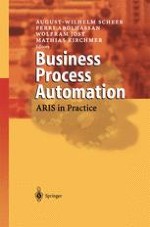Enterprises have to adapt their business processes quickly and efficiently to new business environments to ensure business success and long term survival. It is not sufficient to apply best business practices but new practices have to be developed and executed. These requirements are met by new business process automation technologies, based on concepts like web services, EAI, workflow, enterprise service architectures, and automation engines. Business process automation becomes a key enabler for business process excellence.
This book explains major trends in business process automation and shows how new technologies and solutions are applied in practice. It outlines how process automation becomes an element of an overall process lifecycle management approach, structured on the basis of the ARIS House of business excellence and implemented through software tools like the ARIS toolset.
